The new SRAM MAVEN brakes promise to combine extreme braking power with good modulation, and they’re the new flagship in SRAM’s brake lineup. Developed for use on enduro and downhill bikes, the four piston brakes boast some proven features alongside some exciting new ideas.
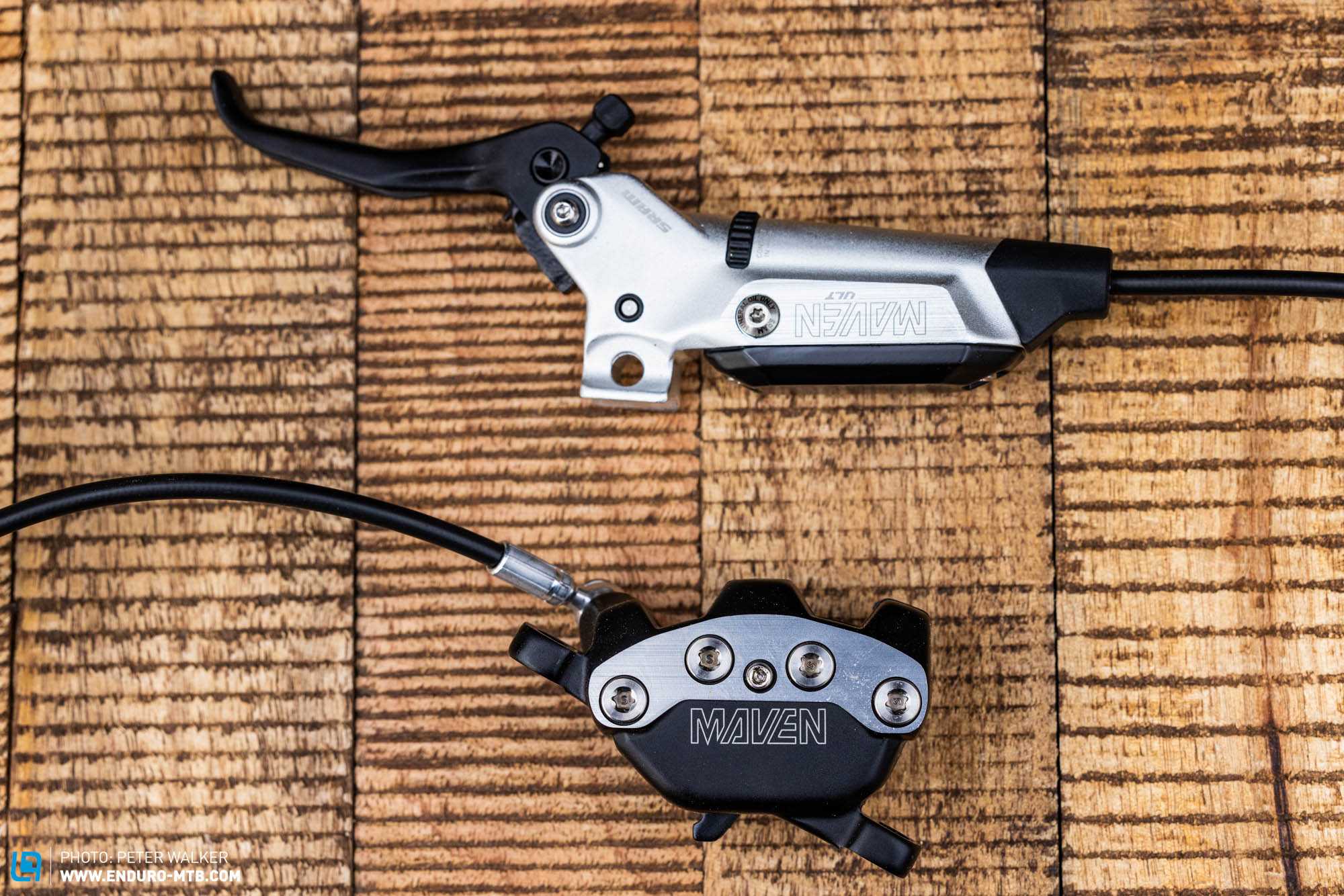
When it comes to brakes, SRAM (and formerly AVID) are an indispensable part of the scene, with decades of experience and a vast range of different models. Having overcome some of the service issues which used to plague their older models, SRAM’s brakes have become known for their fine modulation, if not so much for their power. With their new MAVEN brakes, SRAM want to change that, combining their trademark modulation with an extra helping of power. In addition, they now rely on mineral oil for their latest four-piston brakes, which doesn’t just simplify servicing, but also extends service intervals.
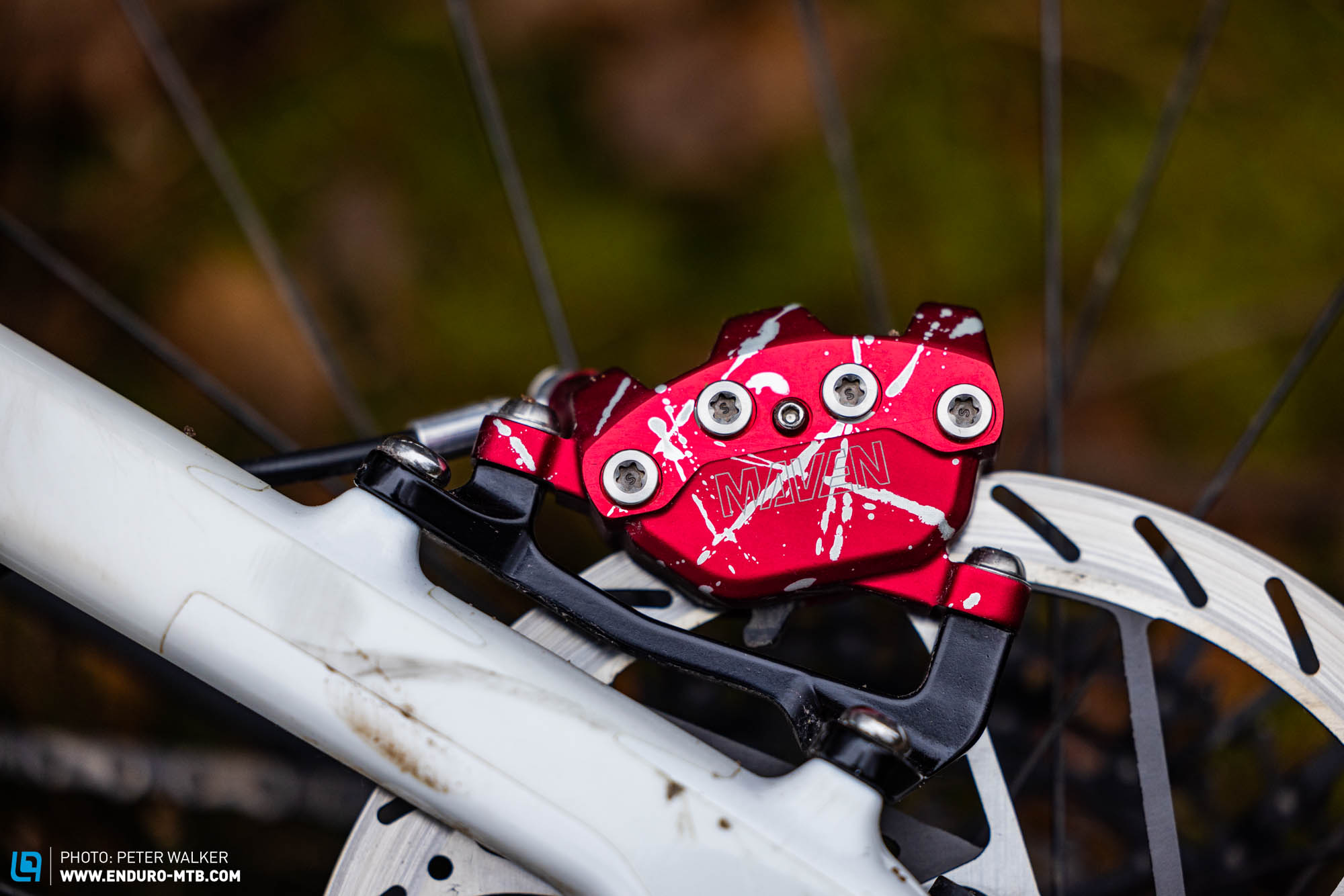
As you can see just by looking at them, the new SRAM MAVEN brakes are designed to be used when things get rowdy on the trails. They’re for enduro, downhill, eMTBs, and riders who regularly push their brakes to the limit or simply want more power. SRAM claim that they deliver almost 50% more stopping power, and require about 30% less force on the lever to deliver the same power. This is all compared to the four-piston SRAM CODE brakes, which aren’t history, by the way – they’ve just had to move over. In future, you will primarily see the CODEs on trail bikes, which we think is a sensible development considering the increasing capability of modern mountain bikes.
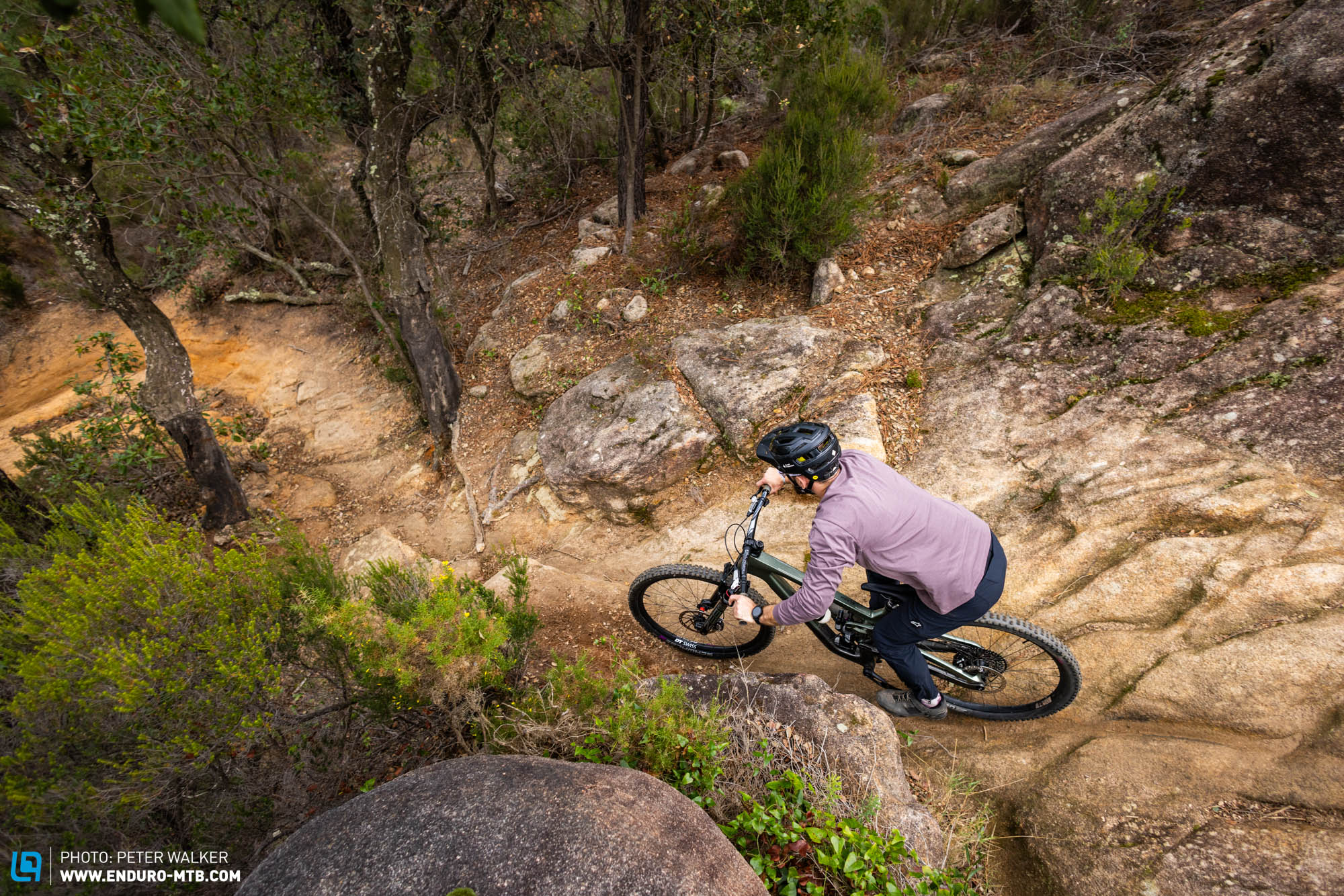
We had the chance to test the new SRAM MAVEN brakes on a wide variety of bikes and with a wide variety of riders since mid-December. We also pitted them against 13 other four-piston brakes over several days in Spain. You can find out how they fared against the competition and in our rigorous laboratory test in the big brake shoot out of our upcoming issue, coming soon. Of course, we’ve already included all the important findings in this review, giving you a detailed report of how the new SRAM MAVEN brakes perform.
The details and features of the new SRAM MAVEN brakes
There’s no denying the fact that the new SRAM MAVEN callipers are rather chunky, and though it’s a matter of taste, we think they pair well with increasingly futuristic looking bikes – not to mention the new SRAM Eagle Transmission groupset – and they don’t stand out all that much on modern enduro or e-mountainbikes.
The new SRAM MAVEN Ultimate brakes aren’t that heavy either, tipping the scales at 366 grams, which is just 55 grams more than the SRAM CODE Ultimate four-piston brakes (with the same hose length). Of course, there is a reason for this, because the four pistons of the new SRAM MAVEN callipers have grown considerably to increase the braking power and reliability. You’ll also notice the four big bolts and the wide bridge of the calliper, which should reduce flex and thus result in a more defined engagement.
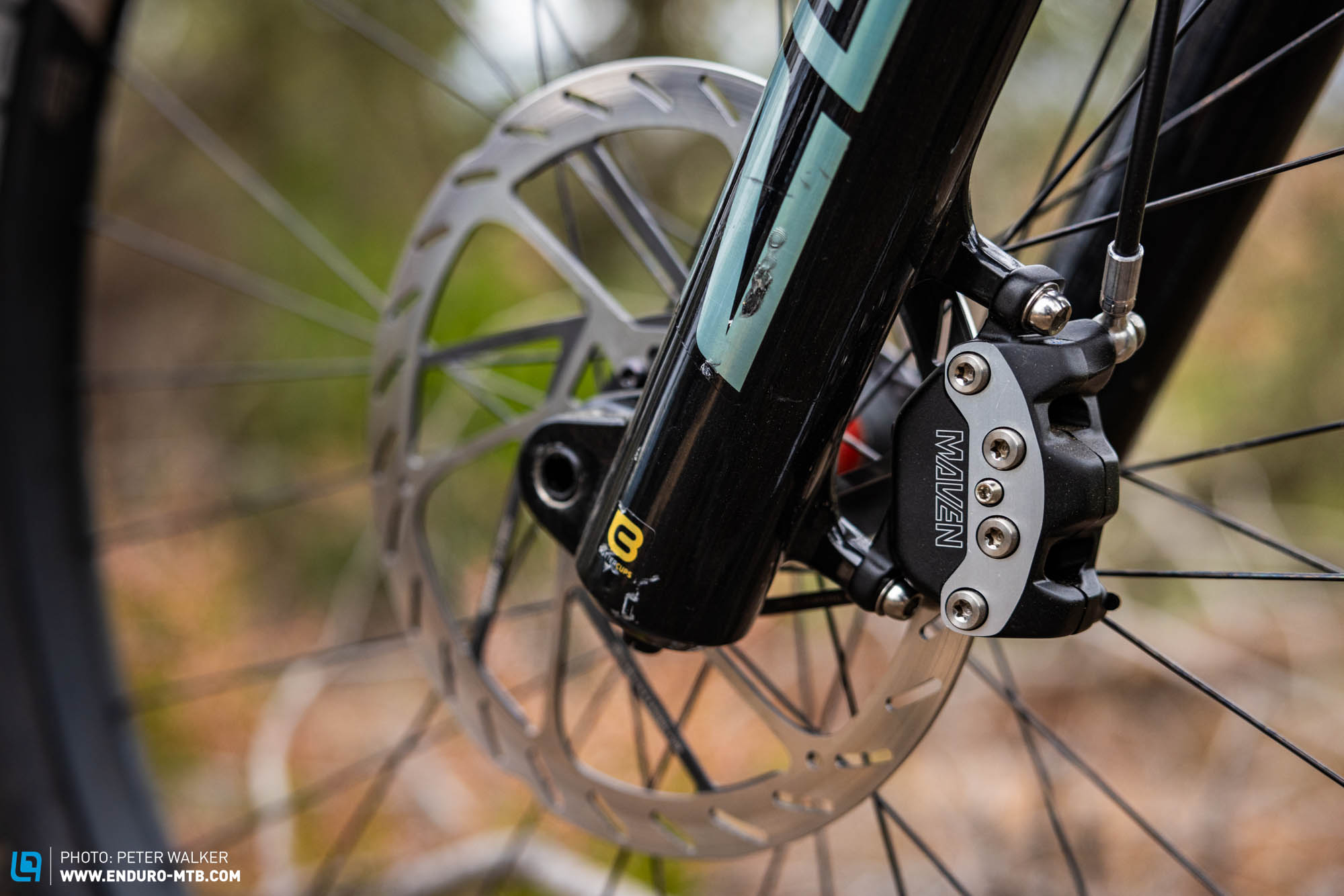
The reservoir and the brake lever have also been updated, with a bigger reservoir and some new features. For example, the lever ergonomics have been adjusted slightly, though they still feel very similar to the CODE and Level brake levers. However, there will be no carbon lever blades, with all MAVEN models relying on aluminium for the time being. It’s worth noting that the new MAVEN levers are not compatible with the rest of the SRAM range. Proven features like the tool-free lever reach and bite point adjustment have remained untouched, allowing you to make trail-side adjustments even with your gloves on.
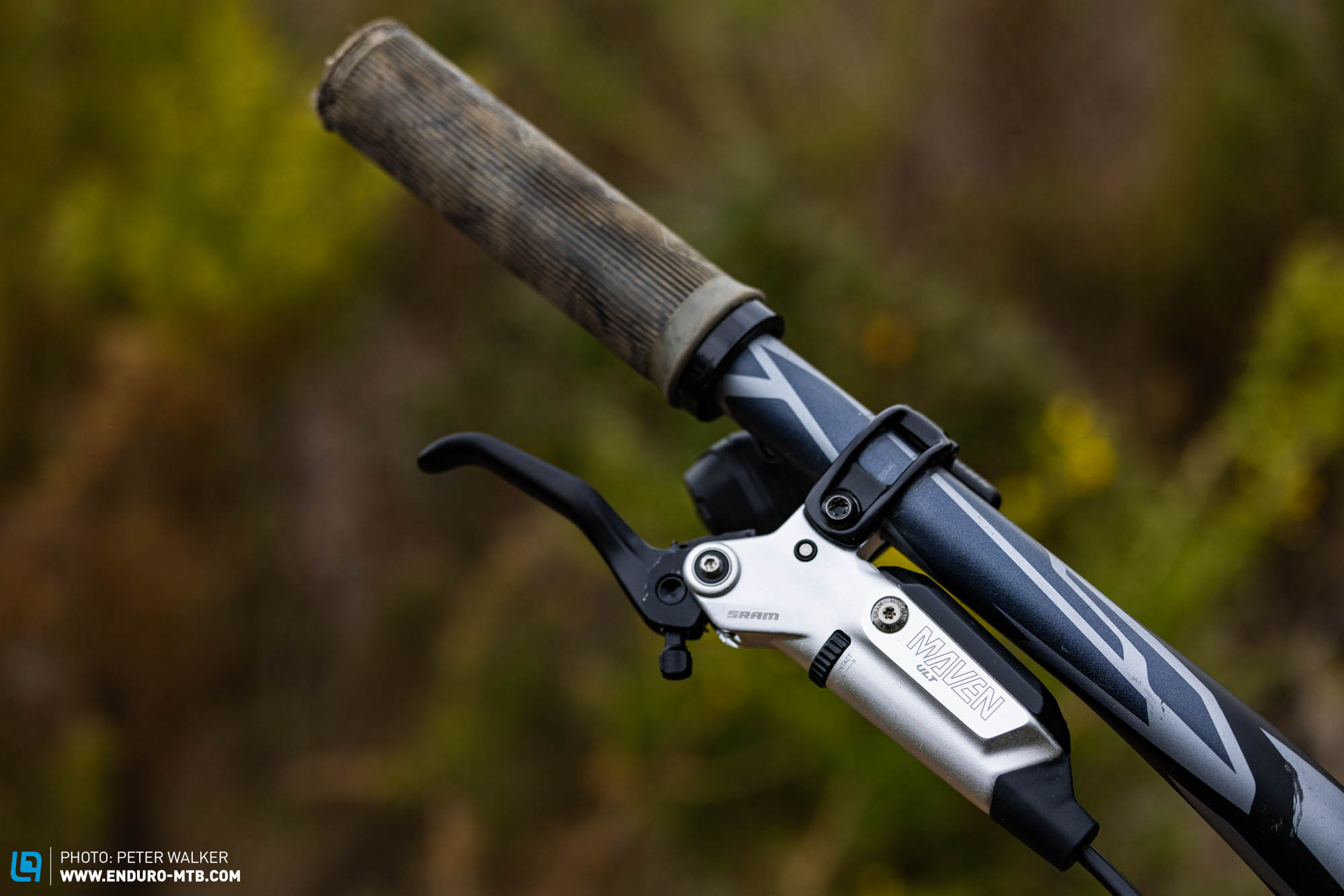
In addition, all SRAM MAVEN models rely on their SwingLink technology, as available on previous SRAM brakes. The SwingLink technology is largely responsible for that typical SRAM feeling and fine modulation, varying the ratio by which the brake pistons move in relation to the lever. Thanks to a kind of triangular cam, the lever throw is reduced by moving the piston of the master cylinder at a greater rate than the lever at the beginning of the stroke. This slows down as the pads come into contact with the rotors, at which point the leverage also increases. This makes them more responsive while improving the modulation during the actual braking process, without that digital on/off feeling that you might be familiar with from some other brands. The lever action is lighter than on SRAM brakes without the SwingLink technology, allowing you to achieve the same braking power with less effort, reducing arm pump and fatigue.
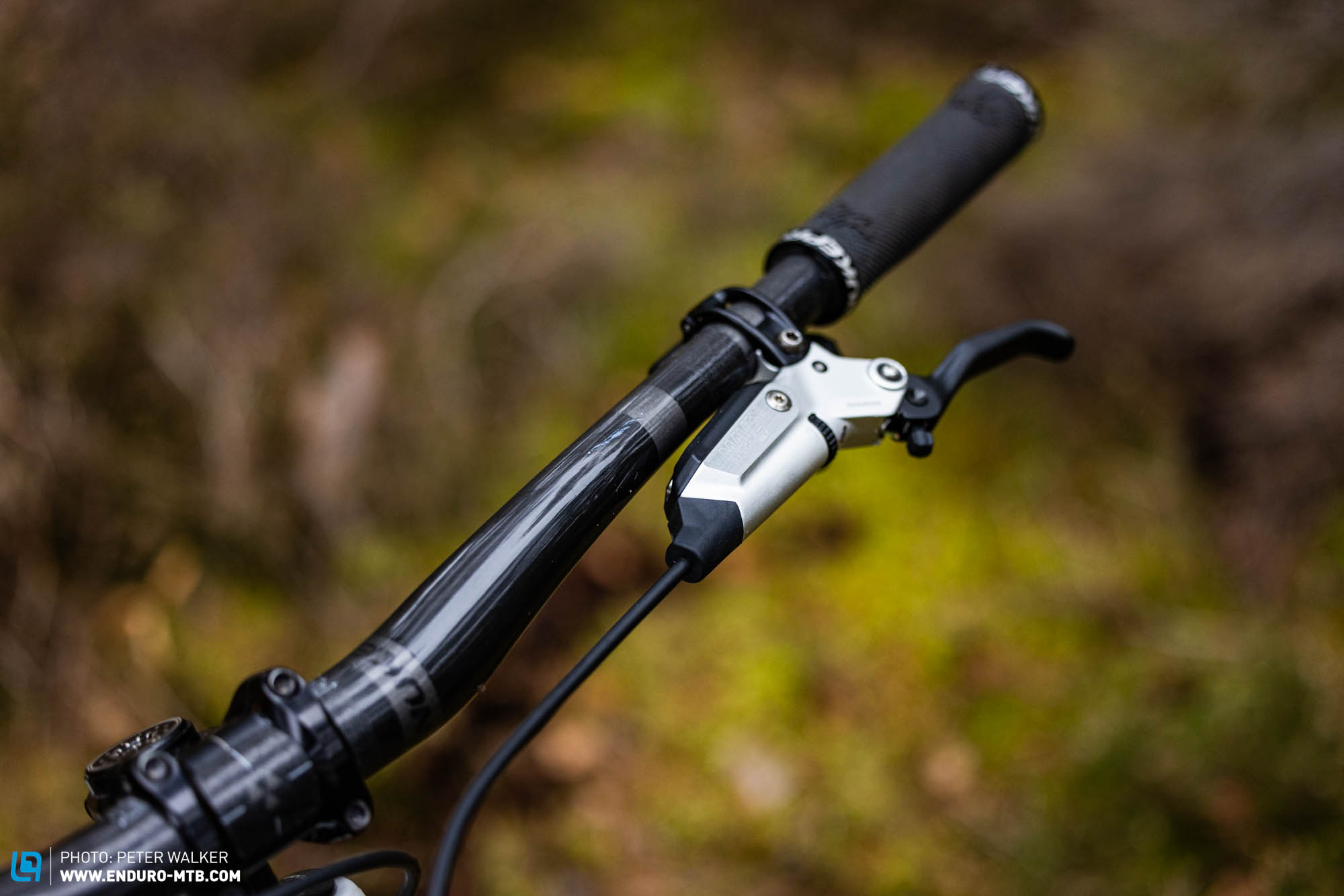
Compared to the previous CODE Ultimate Stealth, the position of the brake hose on the new MAVEN reservoir has also been refined. The position of the reservoir is the same, but the hose is no longer pointed inwards, now running almost parallel to the handlebar instead. This still results in a clean looking cockpit, as the reservoirs and brake hoses sit close to the handlebar, though without the hoses getting pushed up against the handlebar and rattling.
Installing and bleeding the new SRAM MAVEN brakes
SRAM are placing a big emphasis on tuning with the new MAVEN brakes, and by that they mean the adaptability of the rotors and pads. With extremely powerful brakes, you can adjust them to suit your preferences by means of different brake pads and rotors. Weaker brakes, on the other hand, often require larger rotors or more aggressive pads to perform adequately, leaving little room for adjustment.
With the new SRAM MAVEN brakes, many riders will have the choice to run 180 mm rotors without running the risk of the brakes fading. Of course, you can also fit 200 or 220 mm rotors, which will probably be the more common solution, since many forks – like RockShox ZEB or BoXXer – aren’t compatible with 180 mm rotors. Since the new MAVEN brakes are primarily aimed at enduro, eMTB, or downhill bikes, we’re bound to see them paired with large rotors. You’ll also have the choice between the conventional SRAM Centerline, and the thicker HS2 rotors.

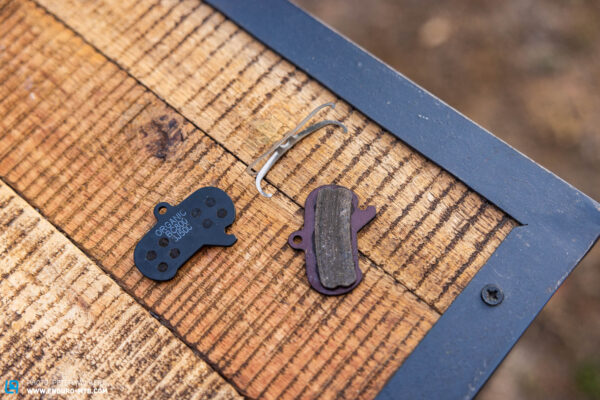
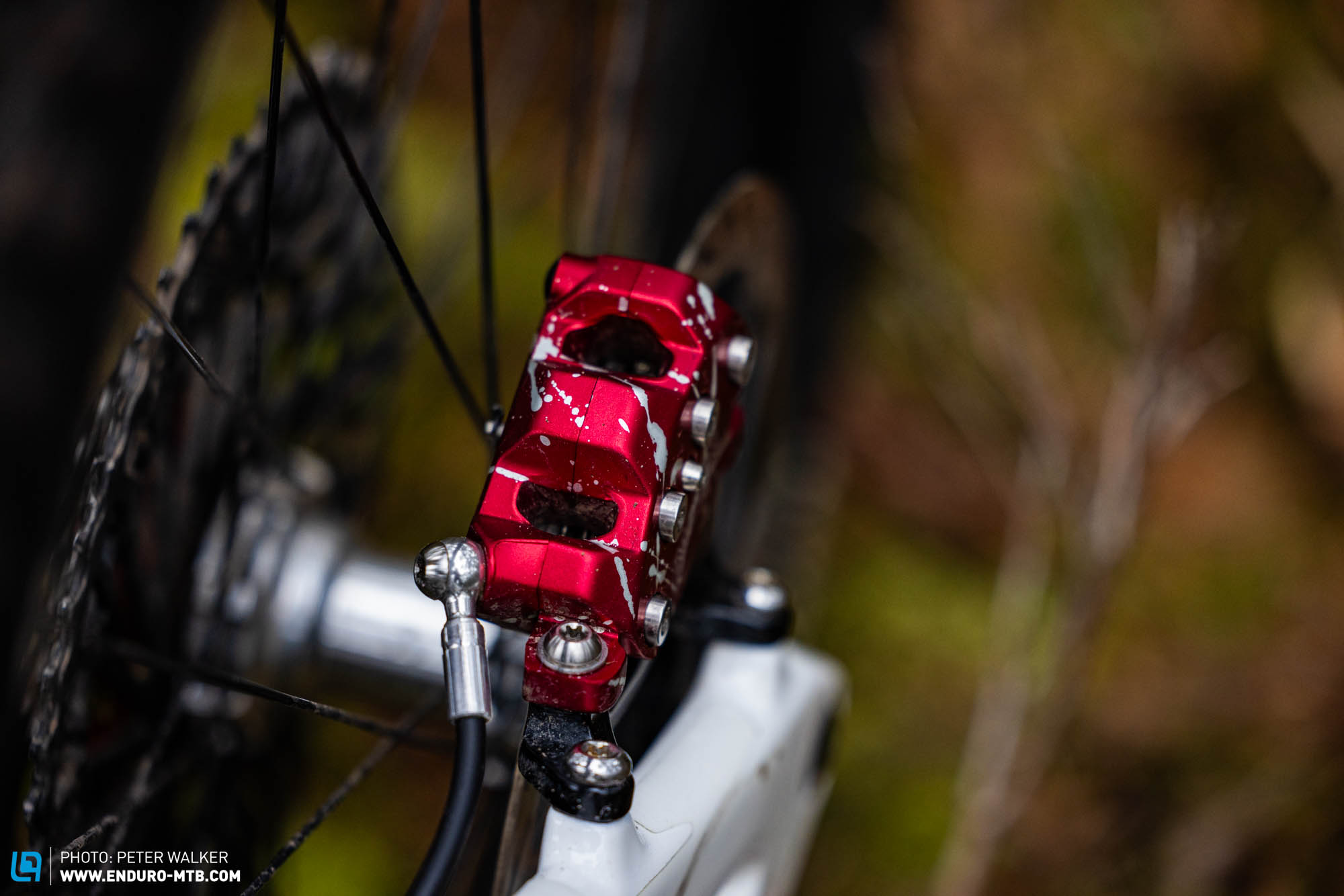
The new XL brake pads offer further tuning options. As standard, the new SRAM MAVEN brakes come with organic pads, which offer a quiet ride and a snappier bite point even when they’re cold, though they also wear faster and are not as heat resistant. In wet or muddy conditions in particular, it might be worth going for the metallic (sintered) pads, which have more bite in these conditions and also last a little longer – just be aware that they can get squeaky. By the way, the pads can only be accessed via the bottom of the new SRAM MAVEN callipers, so you’ll have to remove the wheel to change the pads – something which we would recommend doing anyway.
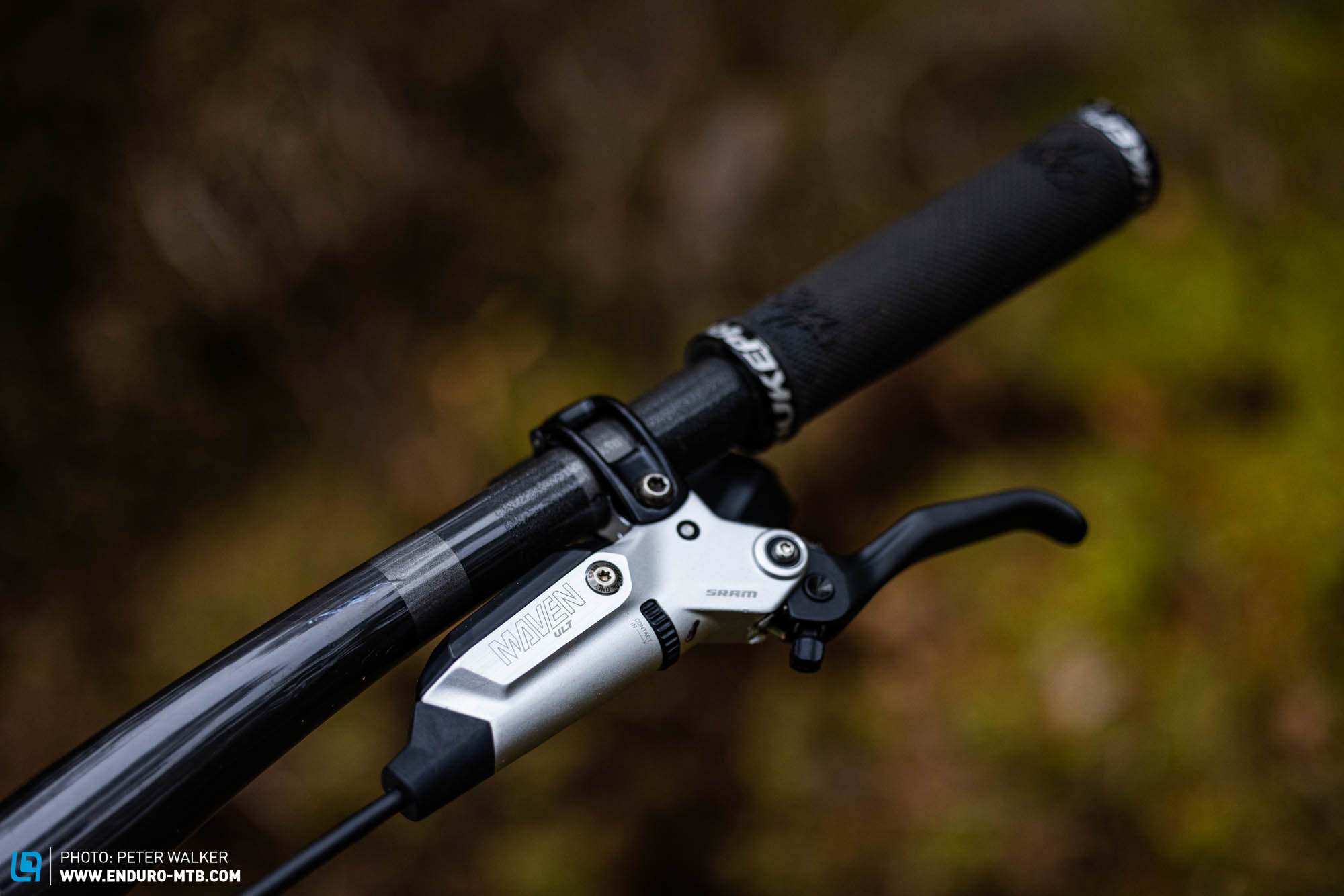
The new MAVEN brake levers use the same mounting system as the rest of the SRAM range. All you need is a Torx 25 key to bolt the handlebar clamps to the brake levers. While there are more user-friendly solutions, it doesn’t take long and is easy to adjust on the trail. You can use their Matchmaker system to attach your dropper post remote or shifter directly to the same clamp, negating the need for additional clamps.
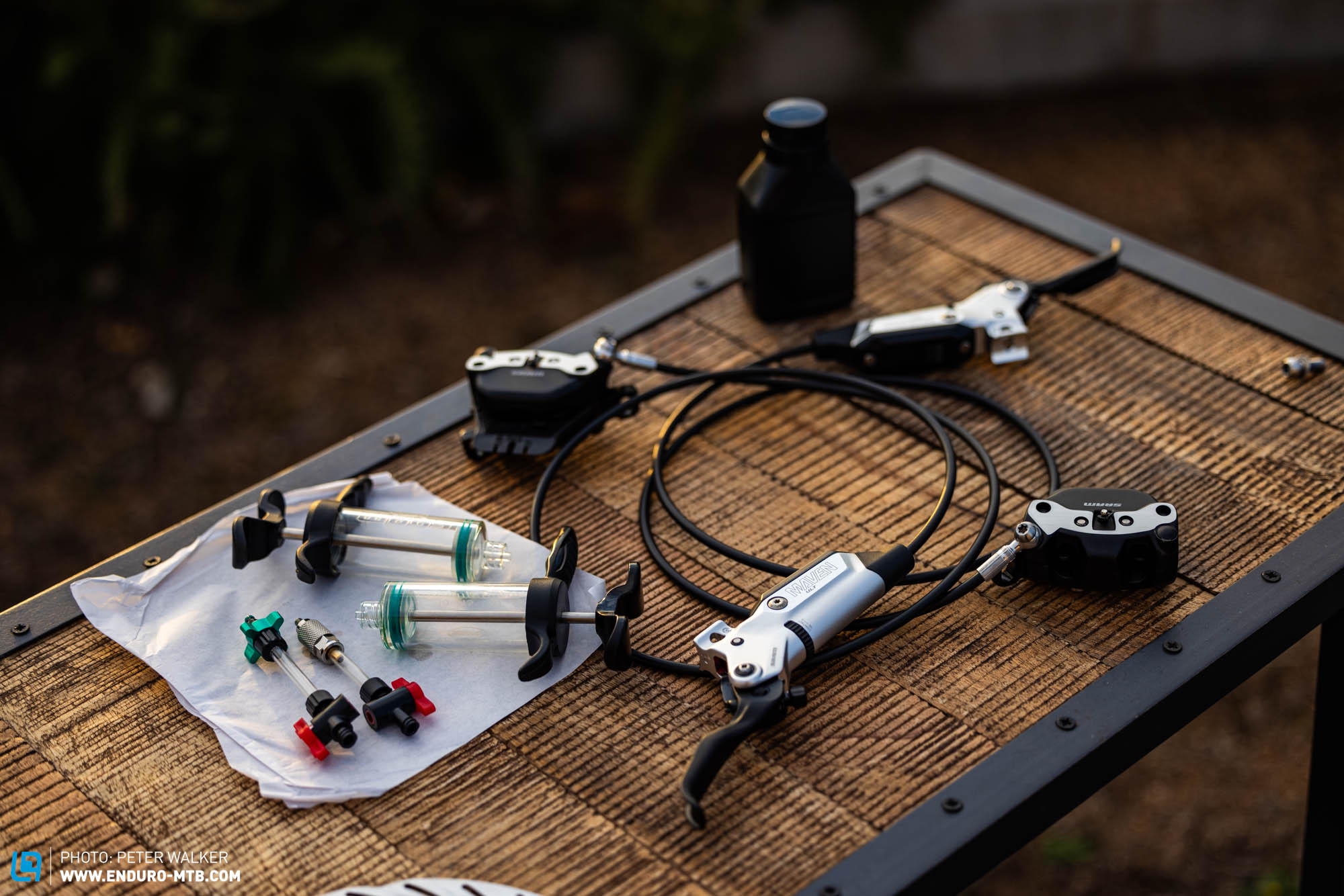
Fitting the callipers to the frame and fork is just as easy. If you need an adaptor, SRAM have launched an updated model called the 20P. This uses two sets of short bolts, one pair to bolt the mount to the frame/fork, and another to attach the calliper to the mount, rather than one set of very long bolts.
As we’re already familiar with from SRAM, you bleed the new MAVEN brakes using two purpose-made syringes. One attaches to the reservoir, and the other to the calliper. The calliper features their Bleeding Edge port, which allows you to easily open and close the bleed port using the syringe while bleeding the brake. The brake fluid is forced from A to B, as usual. The process is a little more fiddly than funnel-based systems such as Shimano or TRP, but you’ll quickly get the hang of it. The SRAM MAVEN brakes are supplied with a bleed kit, including syringes and fittings. You’ll find detailed bleeding instructions via the following link.
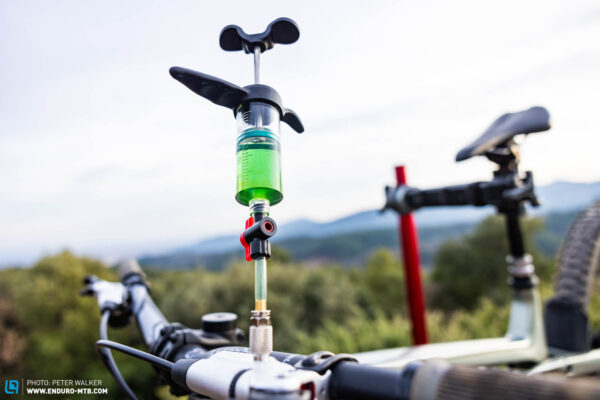

Incidentally, the new MAVEN brakes aren’t the first SRAM models to run on mineral oil, making their mineral oil debut with the four-piston DB8 brakes introduced last year. The advantage of this is that mineral oil brake fluid isn’t corrosive, so it won’t damage your skin or your bike’s finish if you spill some while bleeding the brakes. In addition, it doesn’t need to be replaced as often as the DOT fluid of CODE or Level brakes, as it’s hydrophobic (it doesn’t absorb water). Nevertheless, you should still replace the brake fluid in the MAVEN brakes every two years to ensure full functionality.
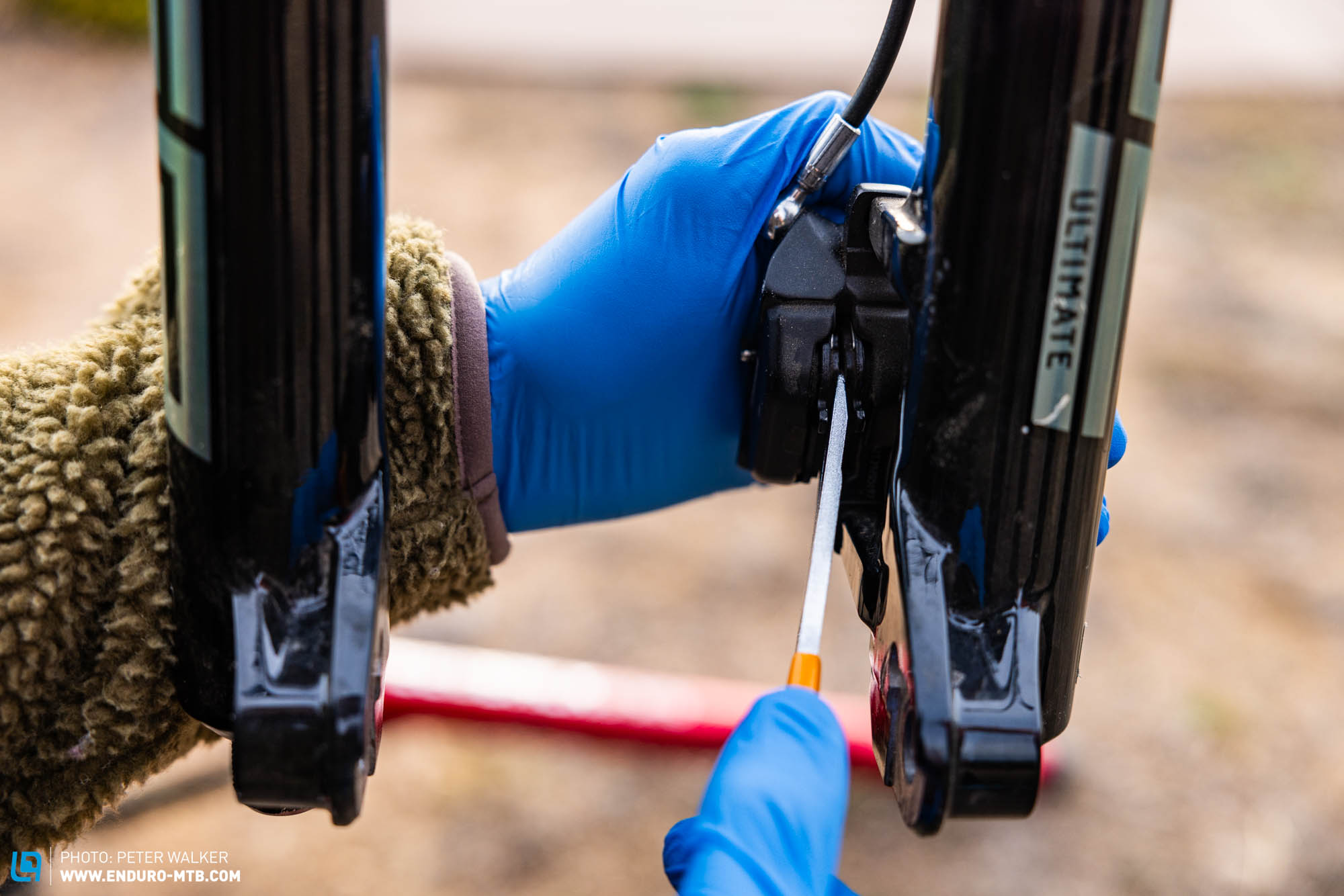
In the case of the SRAM MAVEN brakes, however, there’s a little trick you should use after bleeding, because there may be some air trapped in the calliper, resulting in a vague bite point. To avoid this, SRAM recommend pushing the pads back into the calliper, then pulling the brake lever until the pads touch the brake pad spacer. This process should be repeated a few times to reliably remove any trapped air. The whole process is explained in the Troubleshooting section of the detailed user manual.
The model variants of the new SRAM MAVEN brakes
The new SRAM MAVEN brakes will be available in the following model variants: Ultimate, Silver, and Bronze. They’re similar to the earlier RSC, RS, and R models, the different letters of which stand for:
R = Reach adjust
RS = Reach adjust + SwingLink technology
RSC = Reach adjust + SwingLink technology + Contact point adjust
The new SRAM MAVEN Ultimate and Silver models are analogous to the old RSC variants, offering tool-free lever reach and bite point adjustment, as well as SwingLink technology. The only difference – besides the colour – lies in the bolts, which are made of titanium on the Ultimate models and stainless steel on the Silver models. This saves you 9 grams and costs € 40 extra. In total, therefore, the SRAM MAVEN Ultimate costs € 360 per brake.
The Bronze model is analogous to the RS version, offering tool-free lever reach adjustment and SwingLink technology. It forgoes contact point adjustment, while the lever pivots on a bushing rather than a bearing, priced at € 220 per brake.
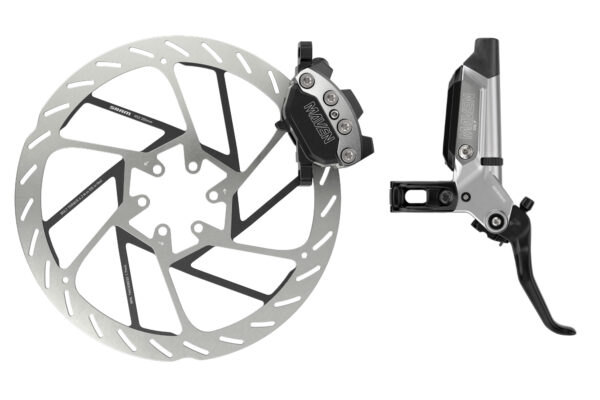
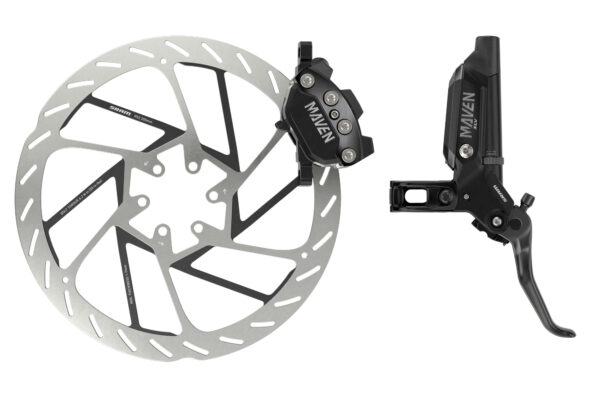

You can also get the Ultimate Expert Kit, which is limited to 2,500 units for the time being. For € 699, you get two SRAM MAVEN Ultimate brakes in an anodised “red splatter” finish, together with a variety of accessories. Included in this is the Pro Bleed Kit, containing mineral oil and two syringes – which would otherwise cost you € 137 – as well as 4 rotors of different diameters. You get two 200 mm versions, and one each of 180 and 220 mm. The rotors you don’t use can be stored in the supplied bag. They’ve also thrown in four extra brake pads – organic and metallic – two handlebar clamps, and one P20 adapter. That way you should have everything you need to install the new SRAM MAVEN brakes and experiment with different setups, offering a considerable saving if you had to buy everything individually – cool!
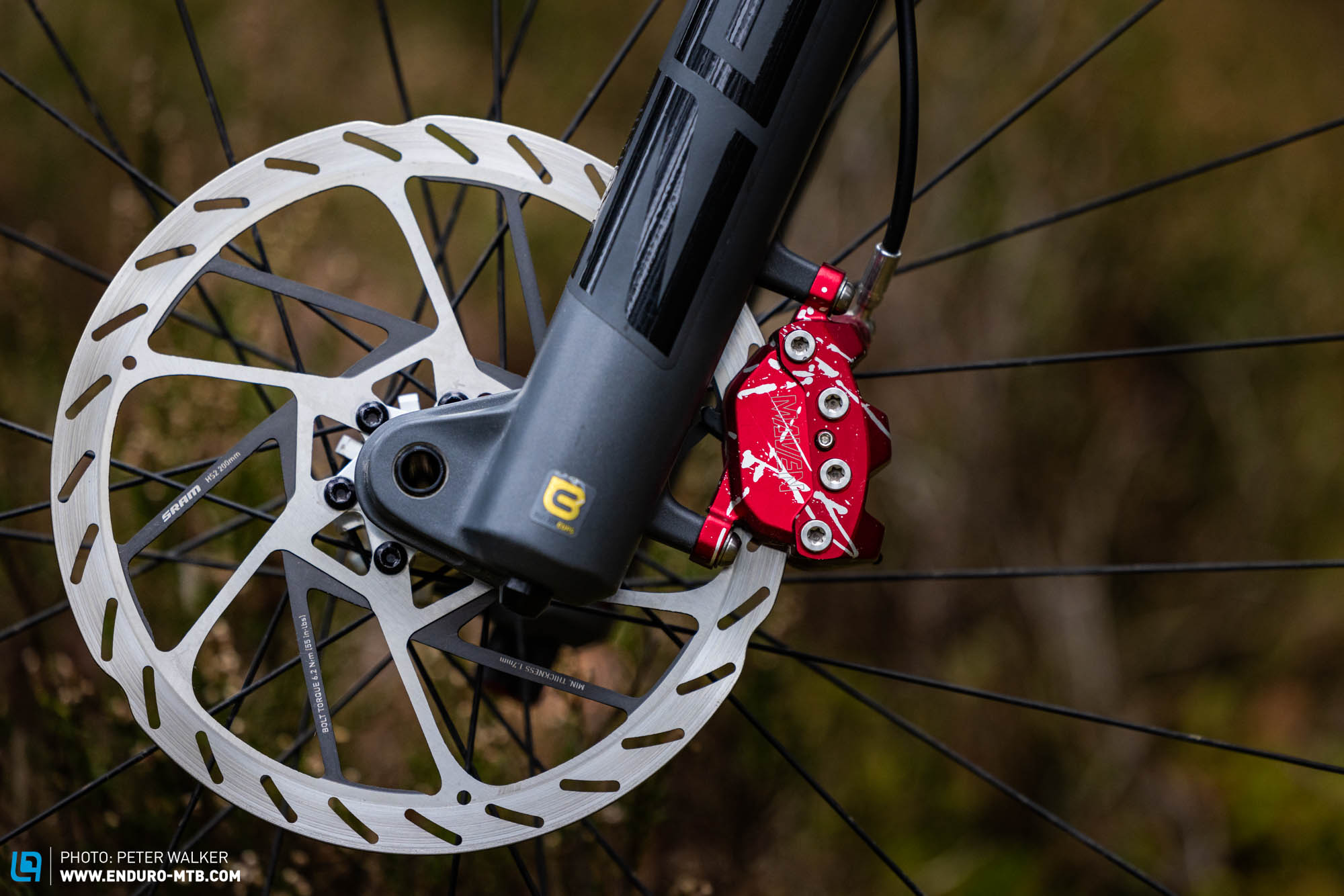
The new SRAM MAVEN brakes on the trail
Thanks to the tool-free adjustment of the lever reach and bite point, you can fine-tune the new SRAM MAVEN brakes right on the trails, even if you’re wearing thick gloves. When you start the bedding in process, you will immediately notice the sheer power that the new MAVEN brakes offer compared to the CODE models. The great thing about it is that this doesn’t come at the cost of the usual SRAM feeling, making the MAVEN feel very similar to other SRAM brakes. This means that you have a very defined lever throw, which requires a little more force than, for example, Shimano XT brakes, but then offers decent bite when the pads contact the rotors.
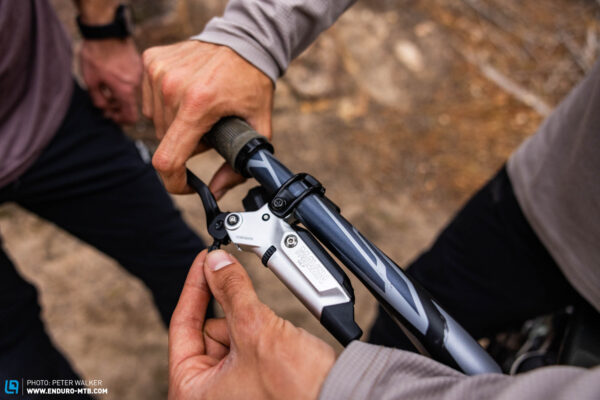
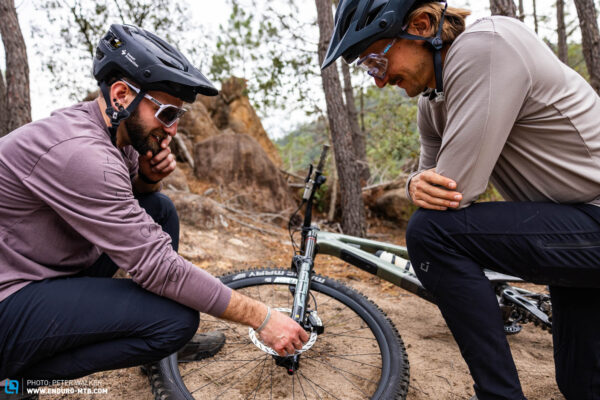

While catching us slightly off-guard in the parking lot, they turned out to be easy to modulate on the trail, as you might be accustomed to from modern SRAM brakes. It doesn’t matter whether you’re on rock slabs covered with loose sand, or wet leaves and mud – the new SRAM MAVEN brakes remain easy to modulate, but they pack a punch when you need them to, easily locking your wheels. We mostly rode the SRAM MAVEN Ultimate brakes with 200 mm rotors and organic pads, and thus had more than enough braking power. That way you don’t need to pull the lever as hard to keep your speed in check, which doesn’t just reduce arm pump, but also gives you more control and instils you with confidence.

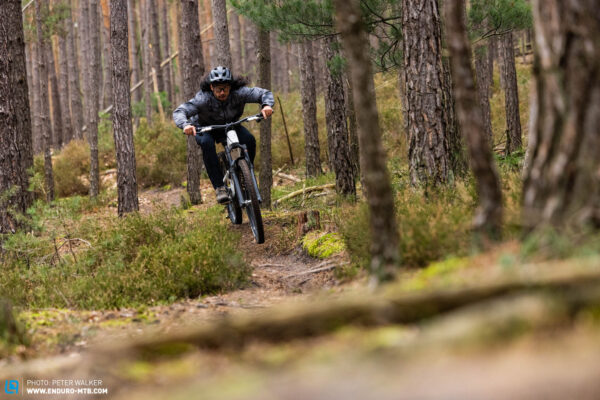
Our conclusion on the new SRAM MAVEN brakes
The new SRAM MAVEN brakes are designed with the most demanding trail and downhill use in mind, offering eye-popping stopping power and a beefy look – the latter of which might take some getting used to. The switch to mineral oil also ensures longer service intervals, though the bleeding process with two syringes remains somewhat cumbersome. The SRAM MAVEN proves that the US brand are able to combine their much-loved feeling and fine modulation with ample braking power.
Tops
- extreme power
- fine modulation
- tool-free lever reach and bite point adjustment
- convenient all-inclusive set for those who want to upgrade
Flops
- burly look is a matter of taste
For more information, visit SRAM.com.
Did you enjoy this article? If so, we would be stoked if you decide to support us with a monthly contribution. By becoming a supporter of ENDURO, you will help secure a sustainable future for high-quality mountain bike journalism. Click here to learn more.
Words: Peter Walker Photos: Peter Walker









